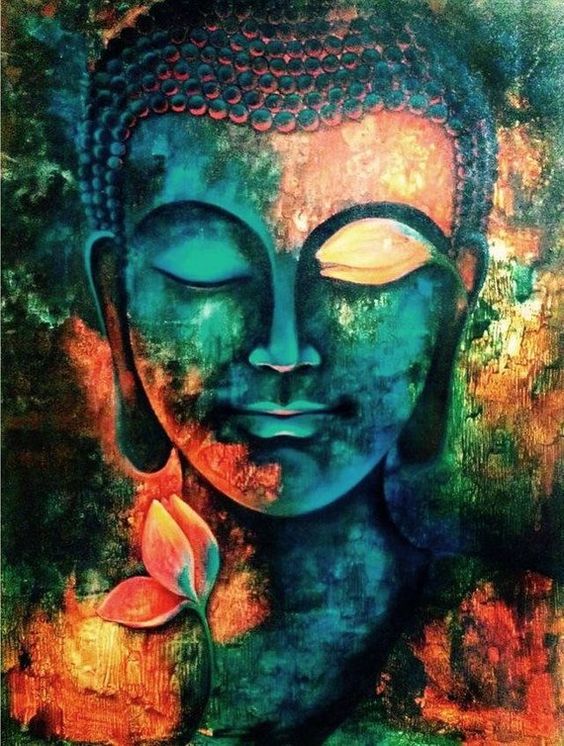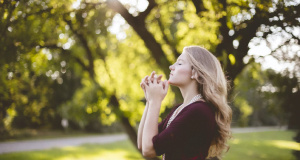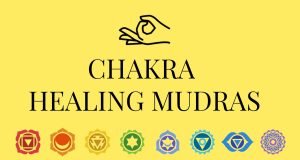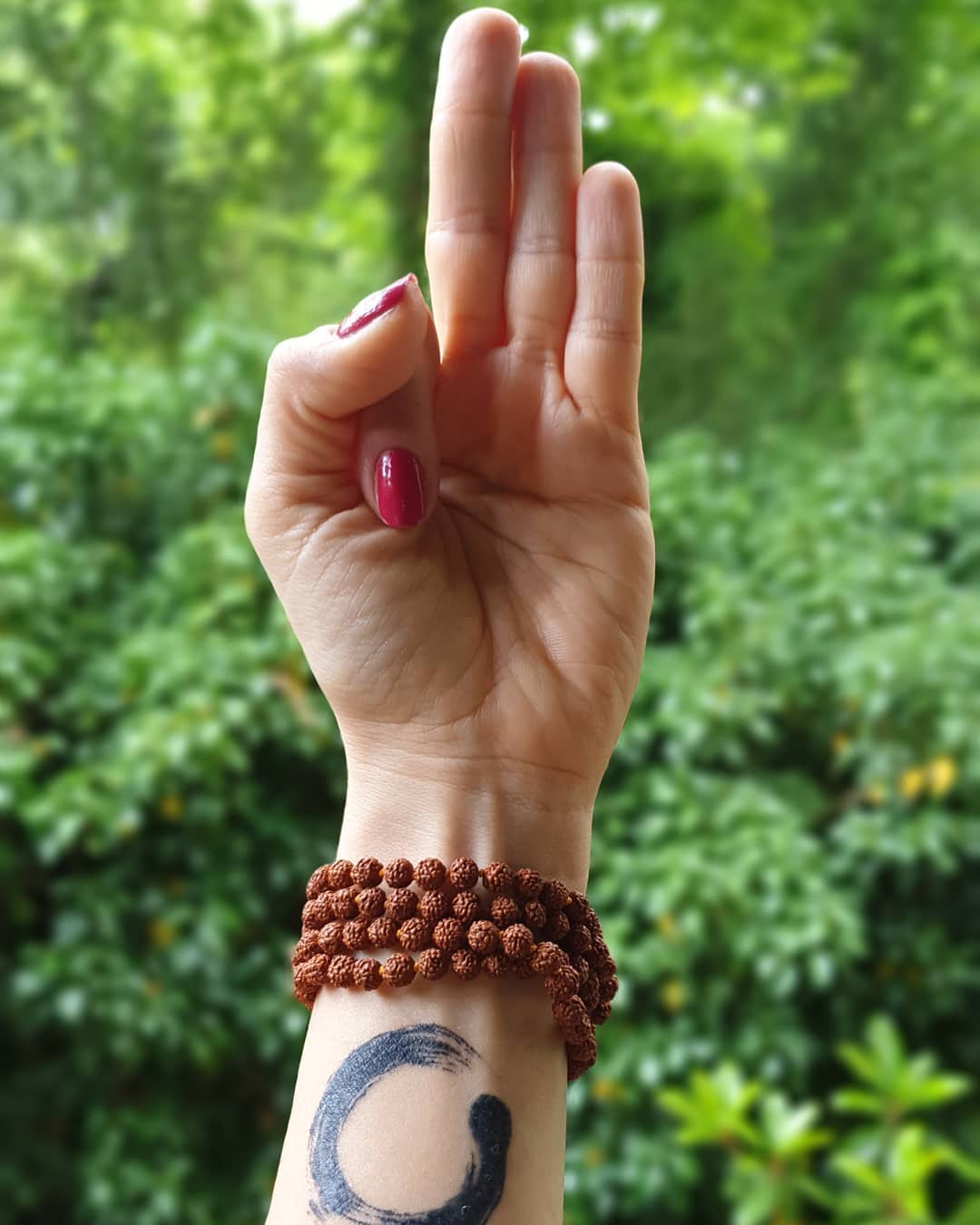
Meditation is considered to be a combination of different hand positions and breathing techniques. In a normal Meditation class, we learn these different hand positions for meditation and techniques of meditation. As we continue to practice meditation, we begin to experience its subtle effects on the body, mind, and consciousness. So, today, let’s learn about 8 different hand positions for guided and unguided meditation i.e. 8+ Meditation mudras.
Contents
What Is Mudra?

“Mudra” (or Different Hand Positions For Guided Meditations or Silent Meditations) is a Sanskrit word meaning “seal”. As our hands are spots of bodily response, they have a profound connection with our brain – and thus the way we form our hands can impact the way we form our mind during the practice of meditation. It is great for mind-body wellness.
Overall, the mudra or different hand positions for meditation you select will rely on how you wish to direct the stream of energy in the body, and obviously, what feels relaxed to you! We will review eight different hand positions for meditation. Let’s now learn about meditation hand signs and meanings below.
Different Hand Positions For Meditation Practice:
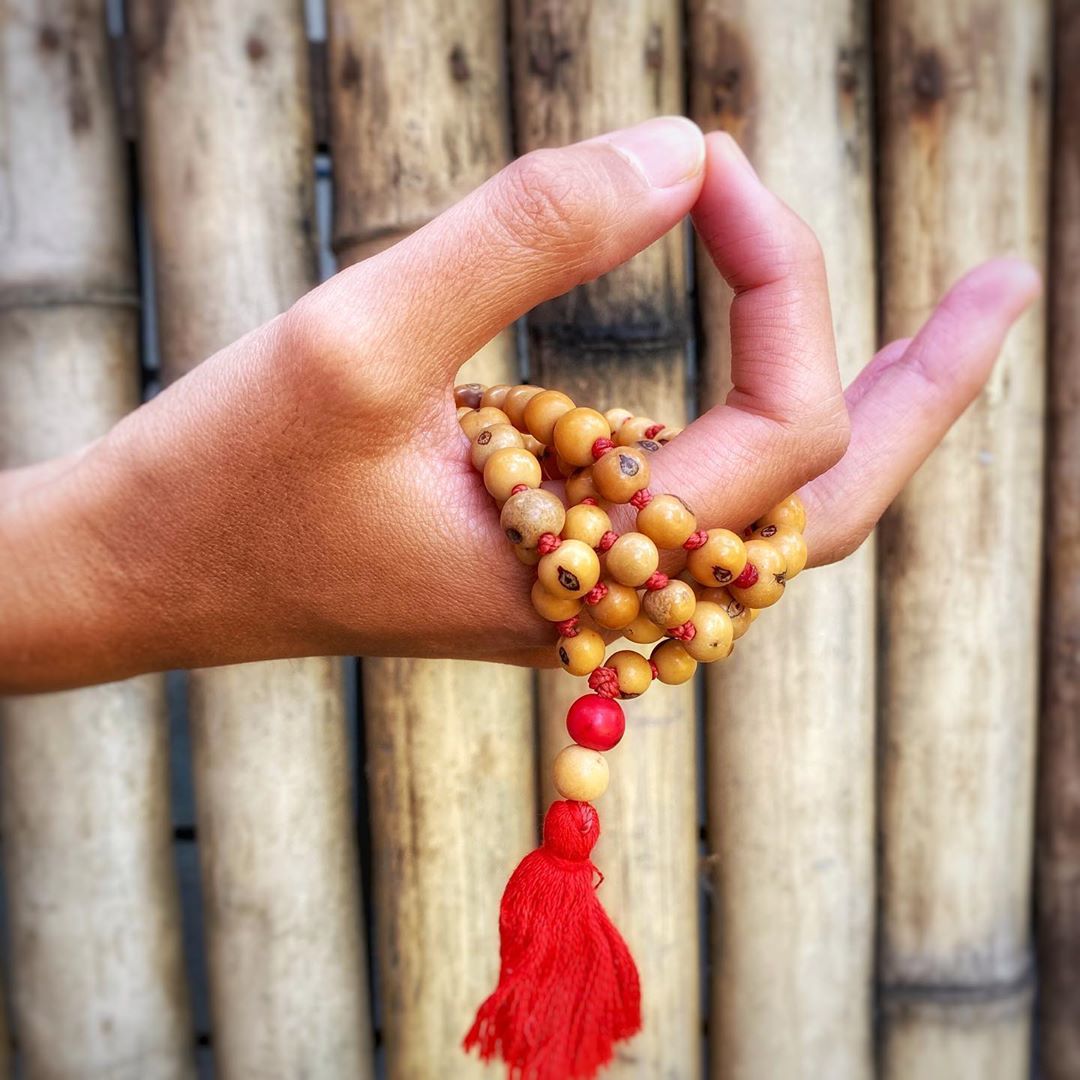
Extremely specific and based on the principle of Ayurveda, yoga postures are considered a healing tool. The practice of mudra with yogic breaths stimulates various parts of the body alerts the flow of life in the body and starts a life-changing journey.
BuddhiMeditation hand poses are known as hand mudras. But, you may incorporate them into your yoga practice even when you’re not on a mat, such as when you’re commuting, dealing with a difficult situation, or performing asanas.
Such a hand mudra or hand gesture is more complex than simple hand gestures. These mudras have been used therapeutically by Ayurveda practitioners for thousands, if not more, of years!
The Sanskrit term “Mudra” stands for the English word “gesture”. Each hasta (hand) mudra in meditation has a purpose or meaning, much like gestures in everyday life. They can be applied to direct your energy inward and focus your thoughts on a purpose, much like a mantra.
You can use these hand mudras for Dharana (concentration) & dhyana if you are acquainted with the 8 Limbs of Yoga (meditation). If you’d like to understand how to use various mudras in your practice, look into the details of mudra hand positions and meanings below.
So, let’s now know some different meditation hand sign meanings in this post below
Shunya Mudra Or Shuni Mudra
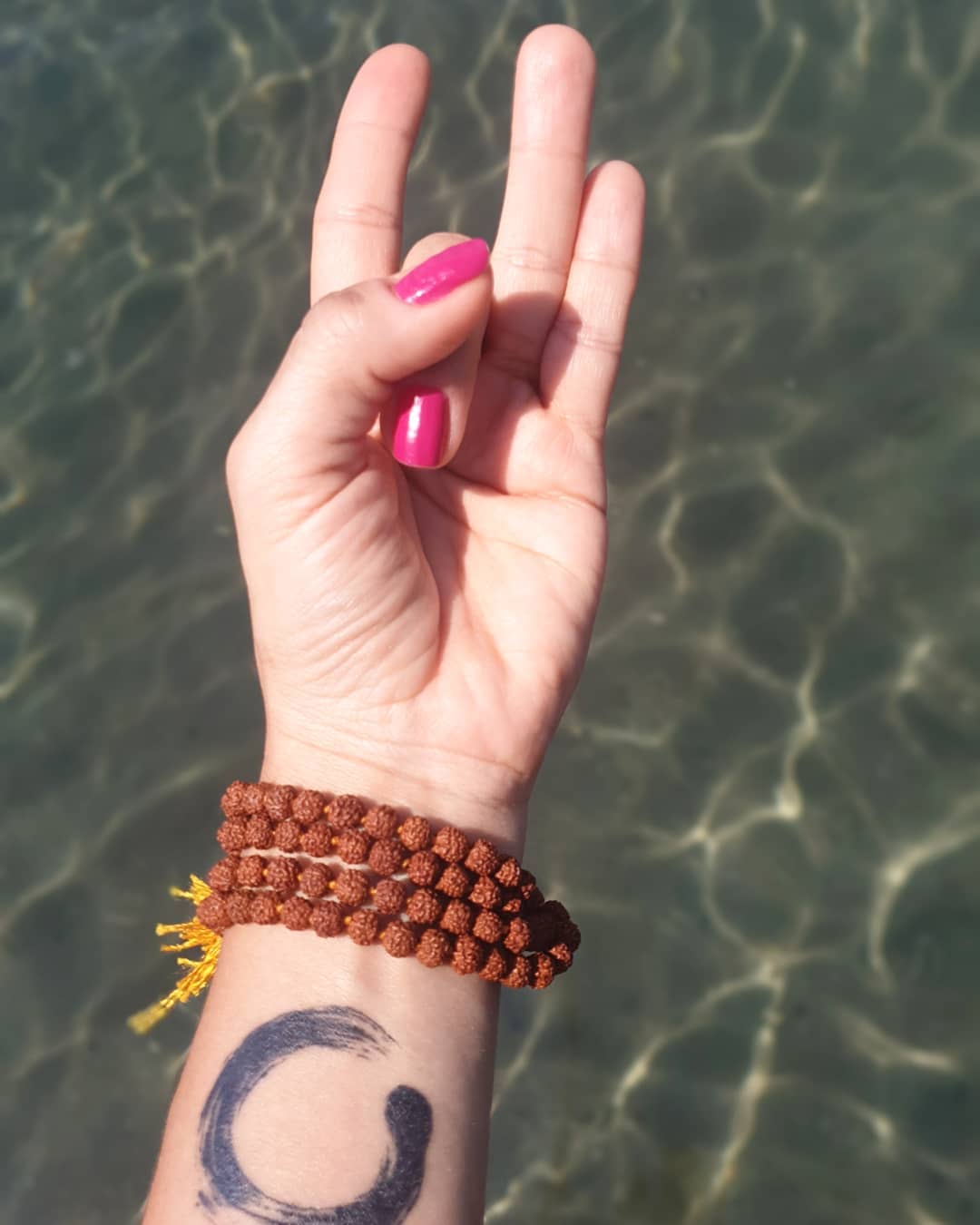
Zero Mudra is beneficial for those who have trouble listening to the sound. It can be used for the treatment of ears, ear noise, and partial or complete deafness. It can also help you in alleviating digestive problems.
How To Do The Mudra?
While maintaining the other 3 fingers pointing upwards and relaxed, this mudra is done by simply touching your middle fingertip to the tip of your thumb.
Prithvi Mudra
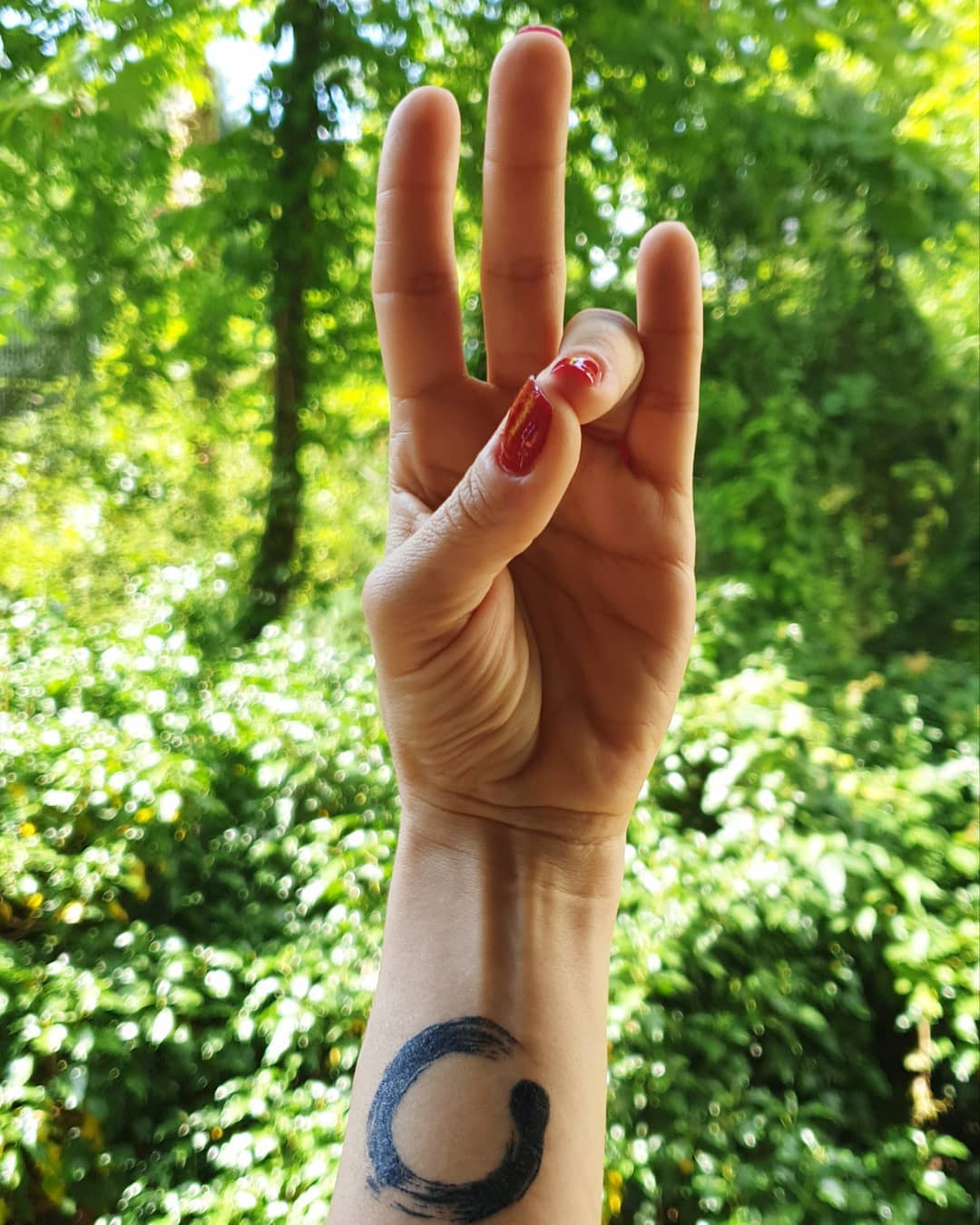
Earth posture helps improve your blood circulation, reduces weakness, and helps to increase your metabolism. If you are worried about your hair, the Earth poses will help regenerate hair by activating follicle cells. It can help to lose weight and strengthen your tissues, bones, cartilage, flesh, skin, and muscles. It also helps reduce ulcers and reduce exacerbations. This practice gives you vital life force.
How To Do The Mudra?
Holding your other 3 fingers straight, bring the tip of your ring fingertip to the tip of your thumb.
Gyan Mudra
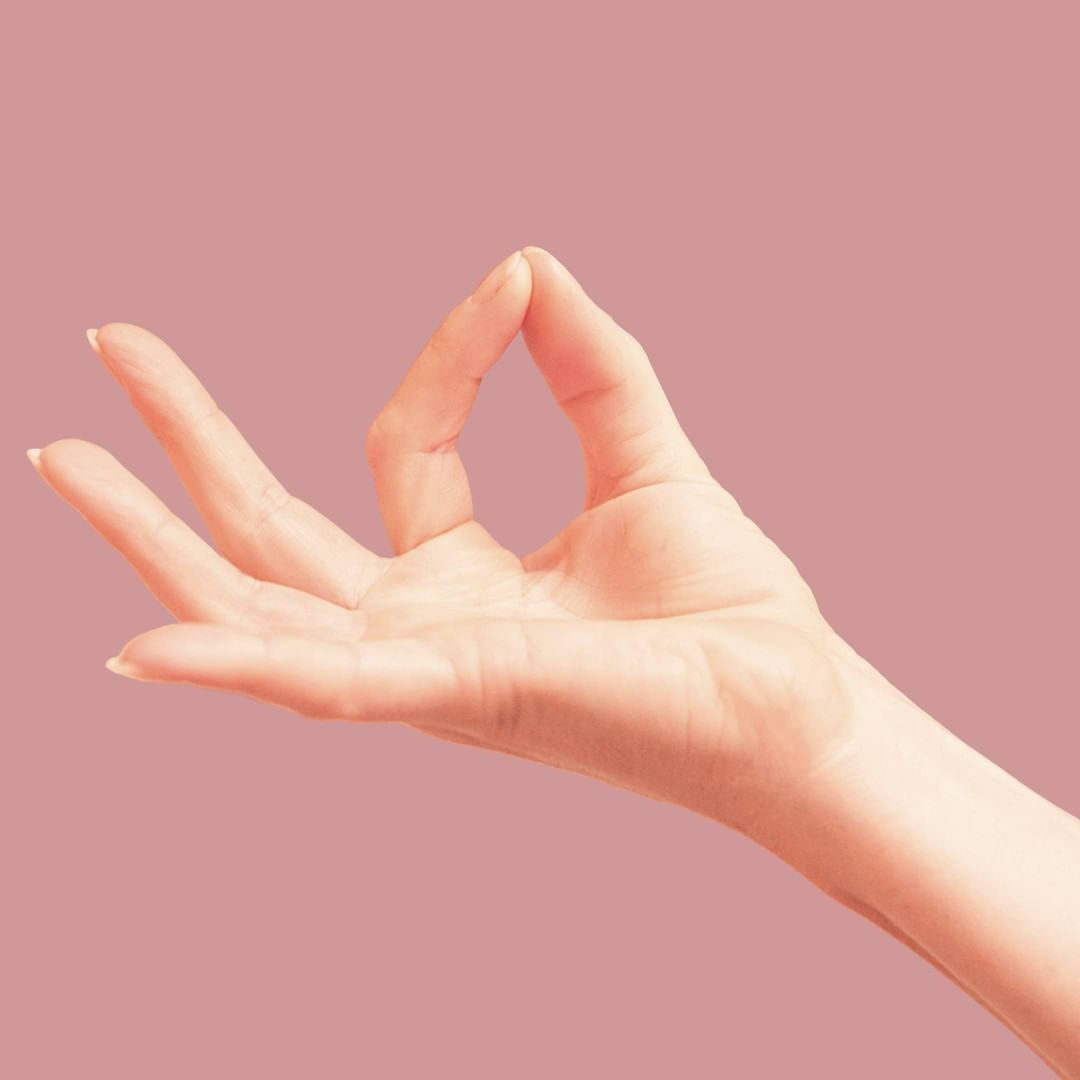
This mudra helps increase knowledge, improves your memory, and helps you focus better. It also helps you to relax and pay better attention. It gives relief from stress and anxiety and helps you to stay balanced in life.
How To Do The Mudra?
Holding your other 3 fingers straight, bring the tip of your index finger to the tip of your thumb.
Apana Mudra
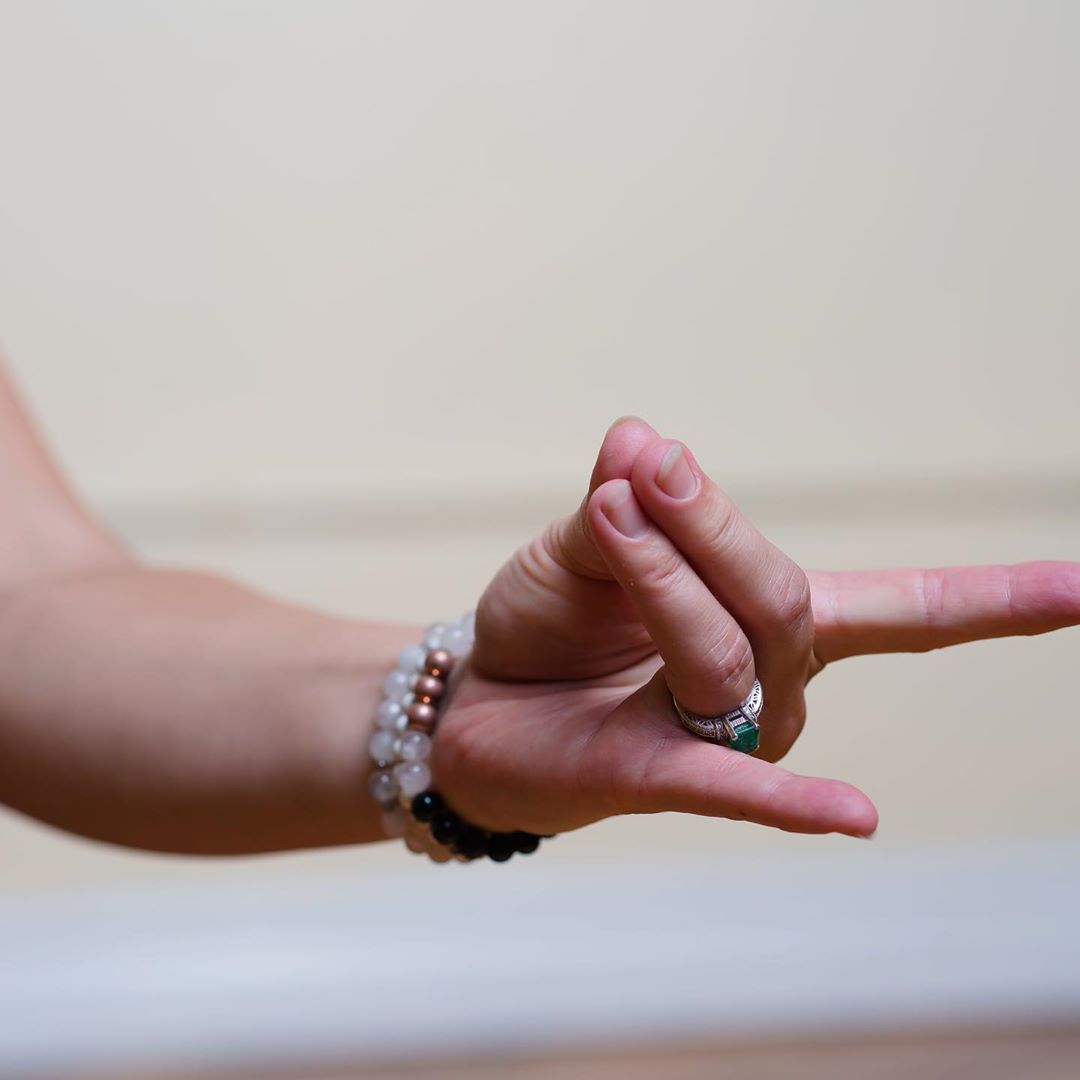
Apana Vayu Mudra makes your heart strong and is very effective for those who have suffered a heart attack. It normalizes blood pressure and stimulates the circulatory system. It reduces nervousness, calms your nervous system, reduces acidity, and helps reduce gas production. Strengthens your bones, and treats insomnia. In this mudra, you have to hold your middle and ring finger with your thumb.
How To Do The Mudra?
Fold the middle and ring fingers of your right and left hands while maintaining the upward-pointing index fingers. After that, bend your thumb’s tip so that it touches your middle and ring fingertips.
Agni Mudra Or Surya Mudra
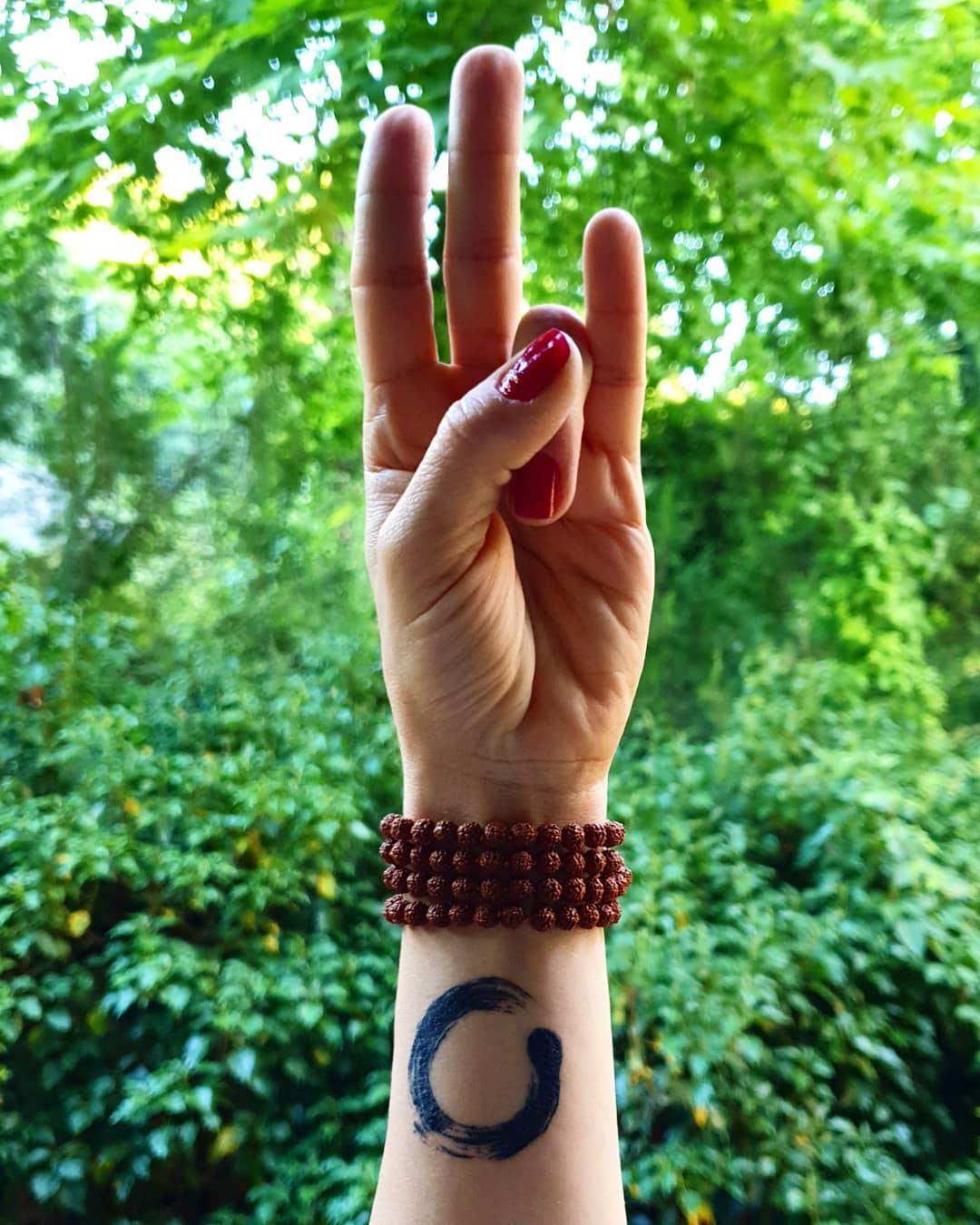
It stimulates the thyroid gland, helps digestion, and helps to relieve weight issues and anxiety. Agni mudra is especially important when your body temperature is abnormally low, when you need to control the coolness of your skin, body, limbs, and hands when you are not able to cope with the cold weather, when your metabolism needs to be increased, as well as your appetite and constipation problem need to be reduced.
How To Do The Mudra?
This mudra is done by folding your ring finger towards the base of your thumb till your thumb contacts the knuckle of your ring finger. Straighten the last three fingers without straining your hand.
Vayu Mudra
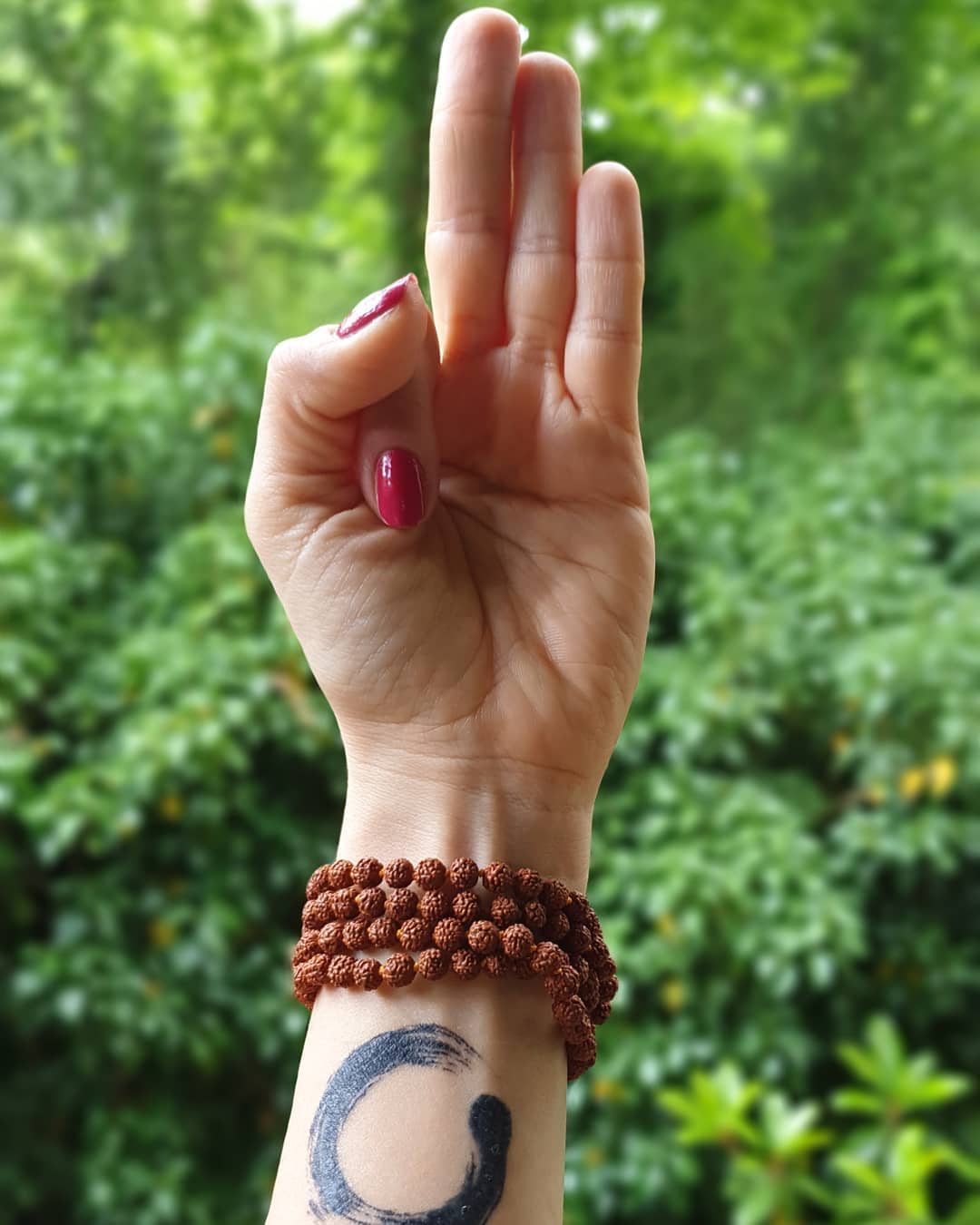
Vayu mudra helps keep you gas-free and excludes excess air from your stomach. It helps in releasing air from your body and gives various health. If your mind is anxious, restless, and over-excited, and your body is feeling various hormonal imbalances, this is the best posture to get your mind and body back into balance.
How To Do The Mudra?
Keep all other fingers of your hand straight and tuck your index fingertip under the base of your thumb.
Prana Mudra
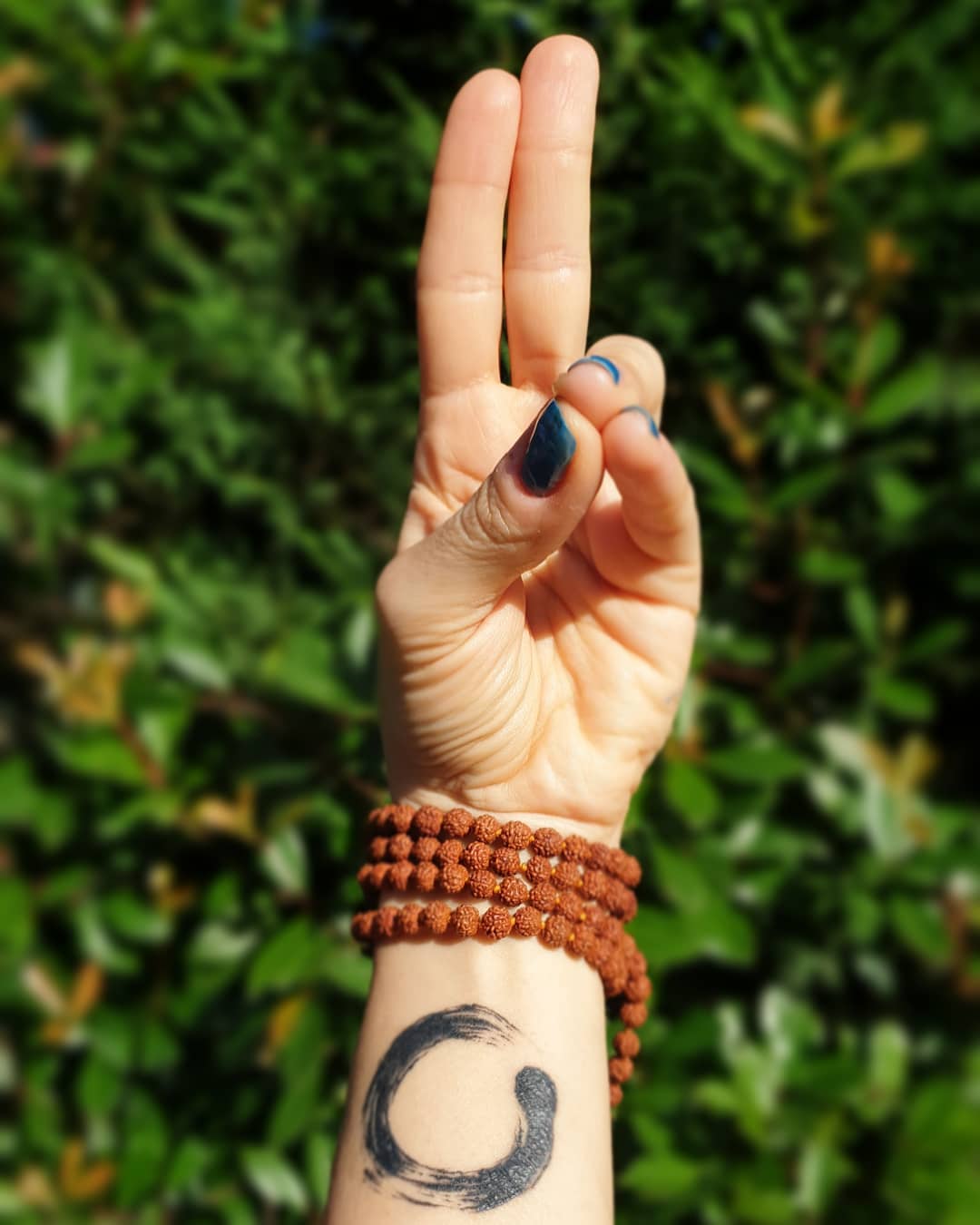
Prana mudra, meaning the ‘life force seal’. Prana mudra improves immunity, refreshes the body, and balances the energy of your body. It helps increase the body’s vitality and immune system, reduces blood vessel blockages, improves the strength of your eyes, and cures vitamin deficiency. This concentration also helps in improving strength and improving sleep.
How To Do The Mudra?
Your thumb tip should be touched with your ring fingertips and pinky fingers. The middle and index fingers remain parallel and in contact.
Varuna Mudra or Buddhi Mudra
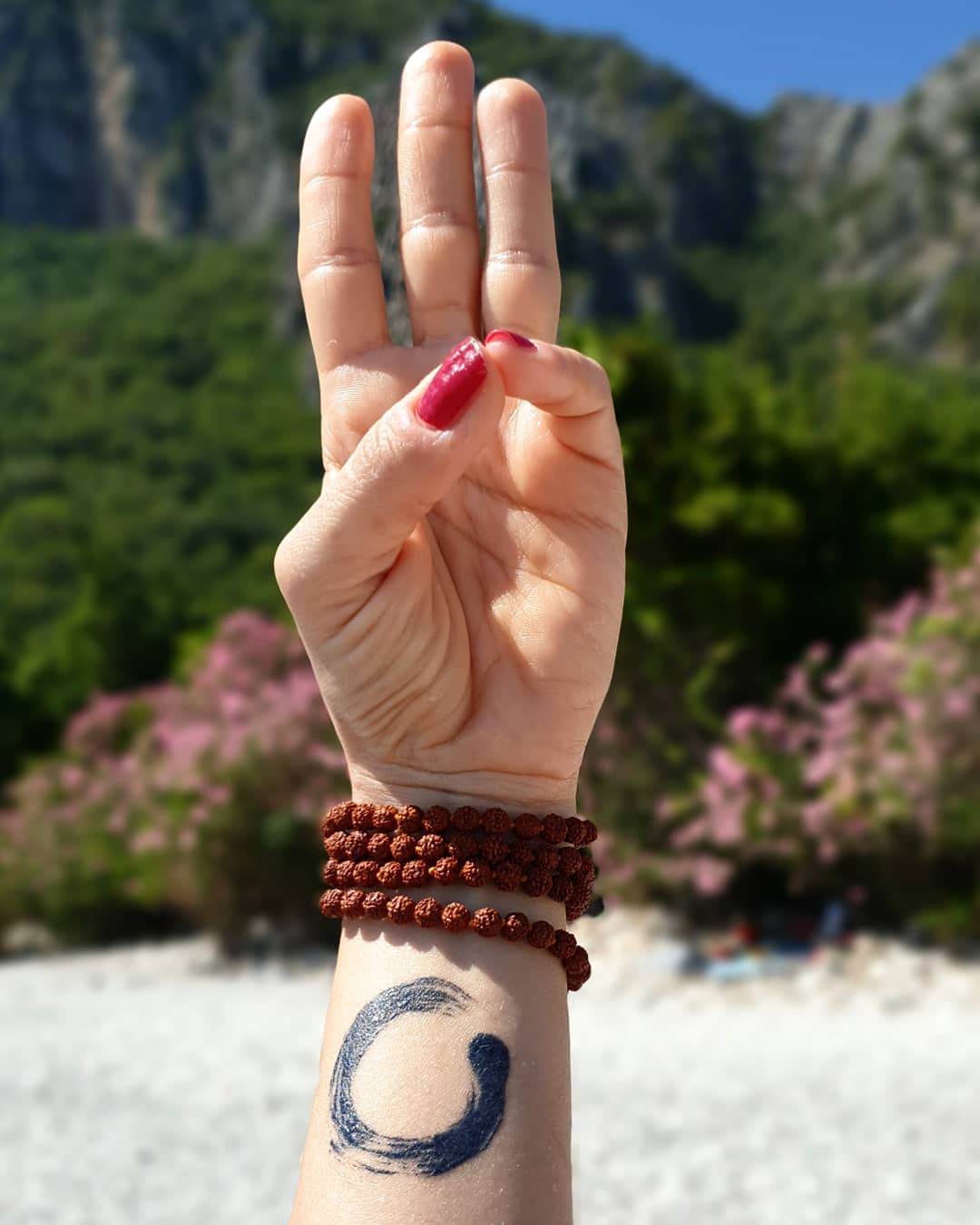
This pose helps in regulating the fluid in the body and is considered very beneficial for the skin. Varun Mudra balances the amount of water in your body and prevents dehydration. It also helps in keeping the blood clean by keeping the level of water in the body, making your skin shiny and smooth, relieving diabetes, and keeping your kidneys and liver healthy.
How To Do The Mudra?
While you hold your other 3 fingers straight, make the mudra by touching your thumb to your pinky finger.
Uttarabodhi Mudra Or Shakti Mudra Or Awakening Hand Mudra
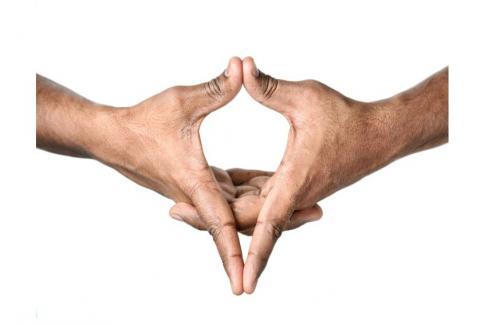
Bodhi and uttara both imply “upward” and “enlightenment,” respectively. This mudra enables you to reaffirm your dedication to the practice of meditation as well as investigate a mindful spiritual practice. The Uttarabodhi Mudra represents the opening to one’s own inner divine force or the illumination of the soul.
How To Do The Mudra?
The tips of your index fingers as well as your thumbs should be joined by fingers three, four, and five being interlocked. Pulling the thumbs away from your index fingers while pressing the index fingers. The palms are a little apart. Starting at the diaphragm, progressively raise yourself straight up through the middle channel while maintaining this mudra. Feel the energy in the body being tapped into by the center channel, which is a line of light, right away. Circuitry in this mudra is rich and deep due to its upward climb.
Dhyana Mudra
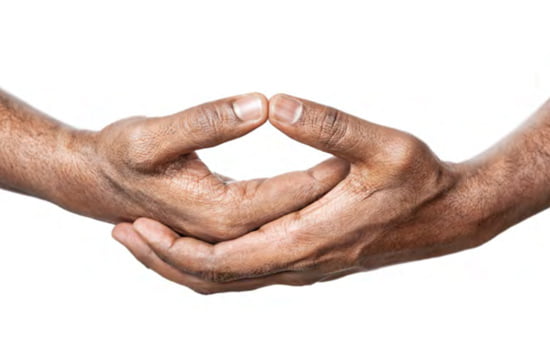
This is possibly the most potent and identifiable hand position we’ve explored. The hands joining in your lap, meaning at the base of your sacral chakra signify a grounding and purification to help you become more mindful. For mental clarity, such mudras are perfect as such mudras reinforcing specific healing states.
The right hand represents community, while the left hand represents dharma. They form a triangular shape that points upward in honor of the life of generosity and love led by the Buddha when they are joined together with your thumbs touching above. It is ideal to use the dhyana mudra during meditation to encourage intense attention and memory. Also, the Dhyana mudra is thought to improve memory and learning.
How To Do The Mudra?
Simply sit down and place your hands in the Dhyana mudra with your right hand on your left hand (palms facing upwards). The left hand (palm facing upwards), which represents the realm of Maya or illusion, is placed on top of the right hand, which stands for enlightenment as well as higher spiritual abilities.
Anjali Mudra
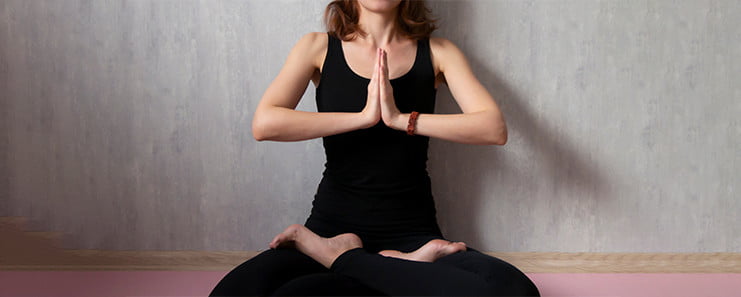
In most Asian nations, greeting one another with the anjali mudra, among the yoga hand motions, is customary. Anjali mudra is also used in yoga since it is connected to spirituality and promotes meditation.
Sanskrit’s word Anjali means “to offer,” or “salutation” and mudra is Sanskrit for “seal” or “gesture.” Anjali mudra means “salutation mark” in English as a result.
How to Do Anjali Mudra?
Firmly press your palms together with your fingers facing upwards. The advantages of Anjali Mudra creates a path to alleviate anxiety and stress, boosts focus as well as lends a hand in reaching a meditative state.
Why Use Different Mudras During The Practice Of Meditation?
Certain hand motions can improve physical and emotional well-being while also having beneficial spiritual effects. However, in order to completely comprehend the advantages of mudras, you must first investigate the age-old Ayurvedic medical system of India. The five components that make up the human body, as per Ayurvedic philosophy, are:
- Fire (Agni)
- Air (Vayu)
- Space (Aakash)
- Earth (Pruthvi)
- Water (Jal)
Our hands also match these 5 elements. It is thought that the body possesses the ideal balance of all these components when we are healthy. But any kind of illness or disease might result from an imbalance in the elemental energy.
The goal of mudra therapy is to link the energy flows between the body, mind, and soul. It is founded on an age-old science. The tiny hand as well as finger movements used in mudras have the power to improve emotional, mental, and physical well-being. Mudra’s aid in reestablishing bodily harmony.
Mudras are used for a variety of ailments, such as headaches, lung health, stress, and spiritual connection. Additionally, there are a number of connections between mudra positions as well as acupressure points on the hands:
Mudras modify the hand positions to form “locks” that direct the body’s energy flow and awaken dormant energy for certain purposes.
The scientific and spiritual foundations of mudras, which are ancient hand motions, can potentially benefit your health on many levels, despite their apparent “woo-woo” appearance. Mudras function in the same realms of ancient philosophy and mysticism as protection crystals, yoga symbols, or chakra healing.
FINAL WORDS
Ancient hand movements used for meditation known as mudras might advance your meditation or yoga practice. They arouse sensory abilities that open up particular energy pathways in your body.
You might be able to utilize a certain mudra in conjunction with meditation techniques to strengthen particular therapeutic states, depending on the meditation (Dhyana) mudra you choose. However, keep in mind that mudras are revered yoga symbols and should only be handled with respect.
While meditating using these mudras, you can place your hand on both your right and left knee. You can practice meditation with these hand gestures sitting in a Padmasan or any other asana at your convenience.
FAQ:

Q. Does hand position matter in meditation?
A. During your meditation practice, you can either place your hands on your legs with the palms facing down or on your lap with the palms facing up and your left hand resting in the other. Practitioners’ preference.
But keep in mind that uncomfortable seating may cause your body to stiffen up, which will make meditation challenging.
Q. What are the different fingers for meditation?
A. These are the terms generally used for different fingers for different meditation hand positions. See the terms below:
Thumb = Agni (Fire)
Index finger = Vayu (Air)
Middle finger = Akash (Space)
Ring finger = Prithvi (Earth)
Pinkie finger = Jal (Water)
Q. Which is the powerful mudra of hands?
A. In the practice of yoga, the usage of mudras is an effective method for self-empowerment and care. A typical hand gesture used in meditation and yoga to improve energy flow and arouse inner consciousness is the Awakening Hand Mudra, sometimes referred to as the Shakti Mudra.
So, Awakening Hand Mudra or Shakti Mudra or Uttarabodhi Mudra is one of the most powerful mudras of hands.
Q. Do Hand Mudras Create Special Effects?
A. To encourage physical, mental, and spiritual well-being, hand mudras are symbolic gestures that are frequently employed in meditation, yoga, and other spiritual disciplines.
Many traditional books and practitioners tout the advantages of using mudras, which include enhancing attention, fostering energy balance, and curing particular diseases.
Mudras have received little attention from scientists, nevertheless. While some people claim that utilizing mudras has had a favorable impact on their lives, others might not have noticed any substantial changes.
It is advised that anyone interested in employing mudras engage them with an open mind as well as judge their efficacy upon their personal experience.
Q. What influence do mudra hand signs have?
A. According to conventional wisdom, mudra hand gestures have the ability to influence the body’s subtle energies, encourage emotional, physical, and mental wellness, and improve one’s yoga or meditation routines.
The balance of the fundamental energies within the body and the redirected energy are said to be the sources of a mudra’s potency.
The persistent and thoughtful application of particular mudras, according to practitioners, can result in the desired changes in a person’s health, well-being, and spiritual growth.
Individual experiences may differ, though, as with other disciplines, therefore it’s important to approach mudras with tolerance, comprehension, and an open mind.
More Recommended Articles:-
- Meditation Symbols & Their Meanings
- What Is Deep Sleep Meditation & How Does It Work?
- What Is Reiki Meditation & How Does It Work?
- What Is Jedi Meditation & How Does It Work?
- What Is Miracle Meditation & How Does it Work?
- What Does It Mean By Abraham Hicks Meditation?
- What Does it Mean By Meditation Art?
- What Does It Mean By Third Eye Meditation?

